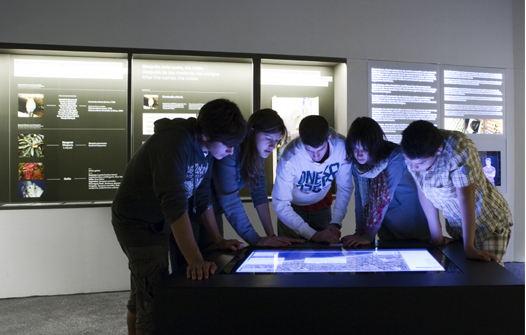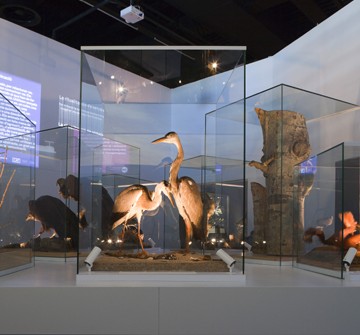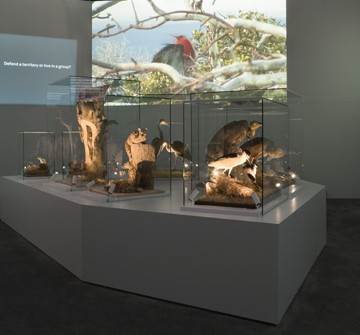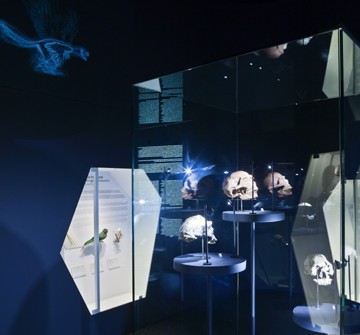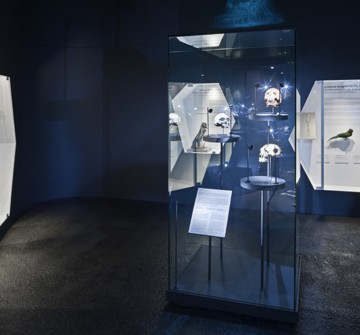Independent display areas measuring 40-100 square metres in size distributed throughout the «Planeta Vida» exhibition. They teach us about specific aspects of nature and their relationship with humans.
Islands of Science on display:
-
Classification and nomenclature
This Island of Science illustrates the way in which living things are classified and given a universal name, and how they relate to other living organisms based on their evolutionary origins.
Systematics and taxonomy are analytical disciplines rooted in the evolutionary knowledge of the living world: scientific classification and nomenclature are like a showcase, a practical summary of the knowledge that we have built up about biological diversity.
- Browse the Museum’s georeferenced collections: Taxo&Map
- Consult the Museum’s most outstanding collections: Wikicollecta
-
Animal behaviour
Why are some animals social others territorial? What attracts a female when choosing a partner? Can animals tell lies? Does altruism exist in nature? Is there a limit to the number of friends that an individual can have? Can females choose the sex of their offspring? These are some of the many questions that ethology attempts to answer and that you can explore in this section.
- Animal behaviour: J. M. Llobet / museuciencies
- Animal behaviour: J. M. Llobet / museuciencies
-
Evolution
This section illustrates a scientific theory that underpins all biology and links all living things from their very origins. Another aim is to dispel the confusion that is often associated with the concept of evolution.
- Evolution: J. M. Llobet / museuciencies
- Evolution: J. M. Llobet / museuciencies

